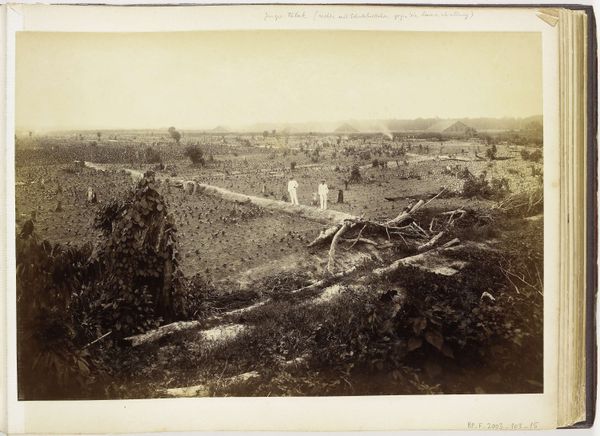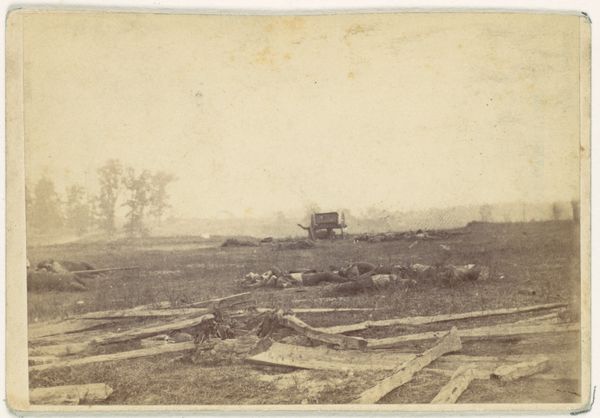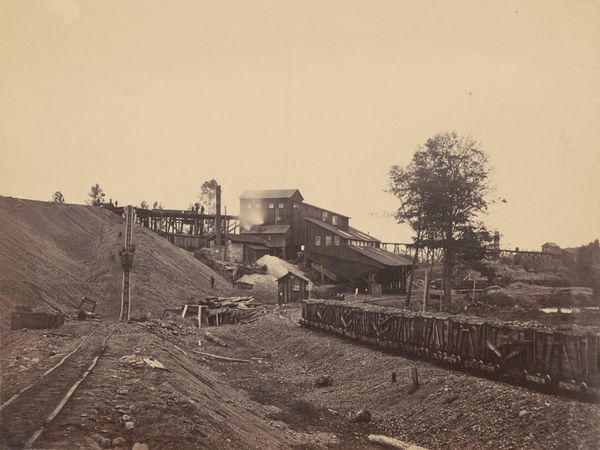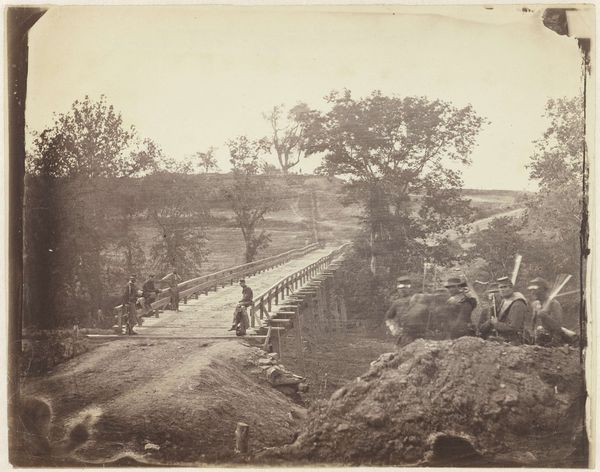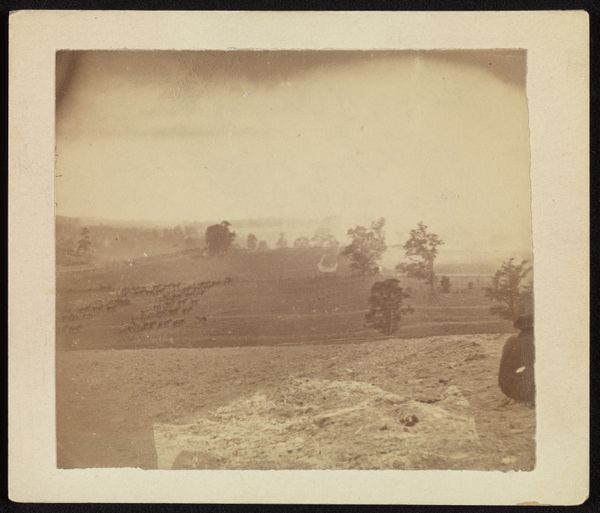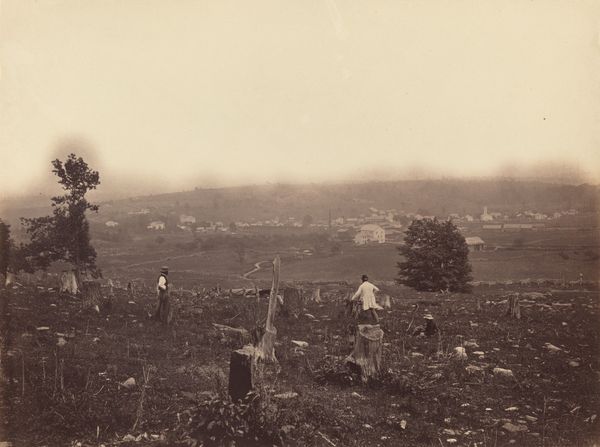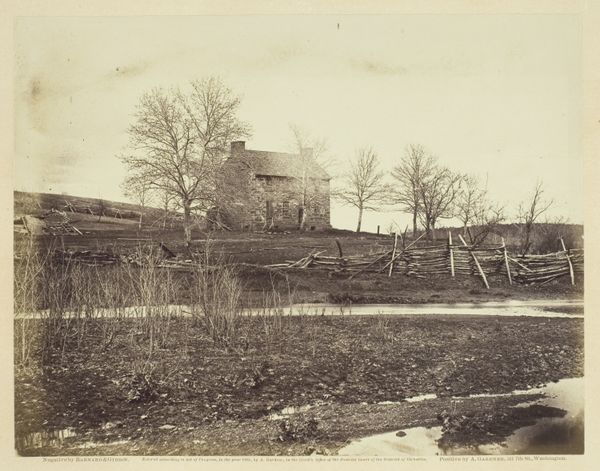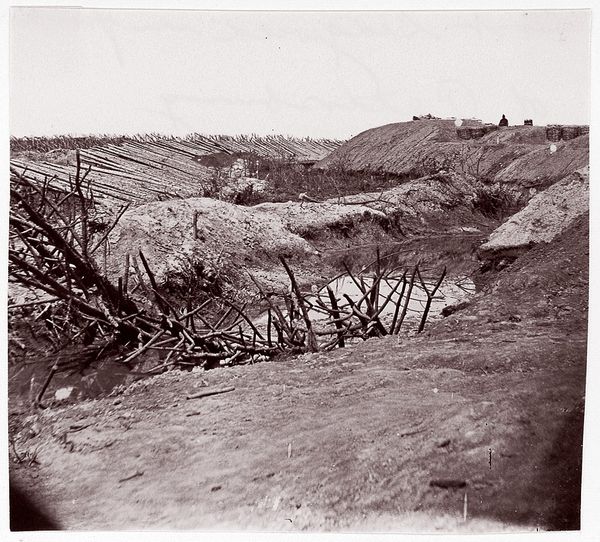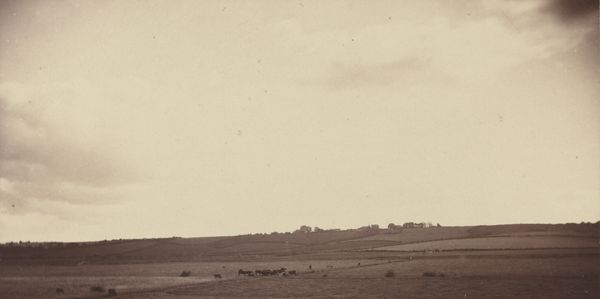
print, photography, gelatin-silver-print
# print
#
landscape
#
photography
#
gelatin-silver-print
#
history-painting
#
realism
Dimensions: image/sheet: 27.8 × 35.9 cm (10 15/16 × 14 1/8 in.) mount: 45.5 × 55.8 cm (17 15/16 × 21 15/16 in.)
Copyright: National Gallery of Art: CC0 1.0
Editor: Here we have George N. Barnard’s "Battlefield in Atlanta," a gelatin silver print from 1864. There’s an eerie stillness to this landscape. It feels like we're looking at a stage after the actors have left, but the set is still standing. What do you see in this piece, particularly regarding its historical and social context? Curator: This photograph operates on multiple levels, doesn't it? Beyond the immediate desolation, it speaks to the devastating consequences of war, specifically the American Civil War, and the deep societal rifts it both exposed and exacerbated. Consider the date – 1864. This was a turning point in the war, particularly known for Sherman's devastating Atlanta Campaign. Can we consider this photograph, then, as evidence, as a stark reminder of the costs of conflict fueled by issues of race and economic injustice? Editor: Absolutely. And seeing the abandoned railway tracks, I can't help but think of the logistical element of war and its disruption of the infrastructure upon which daily life is built. The promise of progress now twisted to serve a purpose of destruction. Curator: Precisely. The railway embodies a broken promise. Progress, yes, but progress benefiting whom and at what cost? Barnard doesn't give us heroic figures or grand narratives, does he? He gives us a landscape stripped bare, a silent witness. This silence becomes a powerful indictment of the narratives that often glorify war, urging us to confront the brutal reality experienced by those marginalized and dispossessed. Editor: It’s a very different perspective than you’d get in a typical history painting of the era. More sobering. Curator: Indeed. Barnard's lens provides a counter-narrative, one that refuses to romanticize war. It challenges us to acknowledge the long shadow cast by such events on communities and individuals. The battle may be over, but the battlefield remains, a constant reminder of unresolved issues, a fertile ground where future conflicts can easily germinate. Editor: I'm struck by how much this image makes you think about power and its consequences. Thank you. Curator: My pleasure. Hopefully, this image becomes a prompt to continually question whose stories are told and, crucially, whose are left out.
Comments
No comments
Be the first to comment and join the conversation on the ultimate creative platform.


